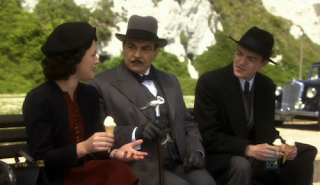A visit to Walmer Castle opens a number of interesting windows on English history. As you might expect if you have read this blog for a while, one of those windows concerns the Duke of Wellington, our favorite hero. But the story began centuries before the Duke arrived on the scene.
Above, the moat is now partially filled in with garden and lawn, but when Walmer was built in 1539 by Henry VIII, it was an important defensive feature. Concerned about invasion by Spain, the king ordered a chain of fortresses along the coast, including Deal Castle, just a few miles north of Walmer. Henry had defied the Church of Rome, divorced the Spanish Catherine of Aragon and married Anne Boleyn. He had reason for concern.
The design of Walmer (above) and Deal, which is the larger of the two, responded to the technological developments in firepower by the sixteenth century. The low shape and size provided positions for many types and calibres of guns as well as making a difficult target from ships out at sea. The goal was to protect the coastal harbors and fleet anchorages along the Downs of eastern Kent.
 |
| interior shots from English Heritage |
The Duke of Wellington spent increasing amounts of time at Walmer as he aged. This is the room in which he died in 1852; he had served as Lord Warden since 1829. More about the Duke at Walmer will be on the blog tomorrow. (Yes, Kristine, that’s the armchair in which the Duke breathed his last).
Street and well beyond; HRH The Prince of Wales, later Edward VII; Sir Winston Churchill; and HM Queen Elizabeth, the Queen Mother. Since her death, the post has been held by Admiral Lord Boyce.
This weather-beaten lion somehow symbolizes Walmer perfectly for me, a place which time has passsed by but which still provides an afternoon’s enjoyment and remembrance of things past.
Tomorrow, more on the Duke of Wellington at Walmer; Next on Travels with Victoria, Penshurst Place












